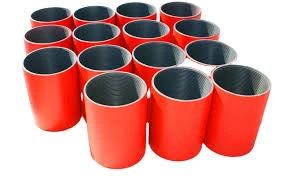- Afrikaans
- Albanian
- Amharic
- Arabic
- Armenian
- Azerbaijani
- Basque
- Belarusian
- Bengali
- Bosnian
- Bulgarian
- Catalan
- Cebuano
- Corsican
- Croatian
- Czech
- Danish
- Dutch
- English
- Esperanto
- Estonian
- Finnish
- French
- Frisian
- Galician
- Georgian
- German
- Greek
- Gujarati
- Haitian Creole
- hausa
- hawaiian
- Hebrew
- Hindi
- Miao
- Hungarian
- Icelandic
- igbo
- Indonesian
- irish
- Italian
- Japanese
- Javanese
- Kannada
- kazakh
- Khmer
- Rwandese
- Korean
- Kurdish
- Kyrgyz
- Lao
- Latin
- Latvian
- Lithuanian
- Luxembourgish
- Macedonian
- Malgashi
- Malay
- Malayalam
- Maltese
- Maori
- Marathi
- Mongolian
- Myanmar
- Nepali
- Norwegian
- Norwegian
- Occitan
- Pashto
- Persian
- Polish
- Portuguese
- Punjabi
- Romanian
- Russian
- Samoan
- Scottish Gaelic
- Serbian
- Sesotho
- Shona
- Sindhi
- Sinhala
- Slovak
- Slovenian
- Somali
- Spanish
- Sundanese
- Swahili
- Swedish
- Tagalog
- Tajik
- Tamil
- Tatar
- Telugu
- Thai
- Turkish
- Turkmen
- Ukrainian
- Urdu
- Uighur
- Uzbek
- Vietnamese
- Welsh
- Bantu
- Yiddish
- Yoruba
- Zulu
stainless steel coupling
Understanding Stainless Steel Couplings A Comprehensive Overview
Stainless steel couplings play a vital role in various industrial applications, connecting different components of machinery and piping systems to ensure efficient operation. This article delves into the characteristics, types, applications, and benefits of stainless steel couplings, providing a clearer understanding of their significance in modern engineering.
What are Stainless Steel Couplings?
A coupling is a component used to connect two shafts together at their ends for the purpose of transmitting power. Stainless steel couplings, specifically, are made from stainless steel, an alloy known for its corrosion resistance, strength, and durability. These couplings are designed to accommodate a wide range of mechanical movements while maintaining the integrity and stability of the system they are part of.
Characteristics of Stainless Steel Couplings
1. Corrosion Resistance One of the primary advantages of stainless steel is its exceptional resistance to corrosion. This property makes stainless steel couplings ideal for applications in harsh environments, such as chemical processing plants, food and beverage manufacturing, and marine industries.
2. Strength and Durability Stainless steel is known for its high tensile strength, which allows couplings to handle substantial loads without deforming or breaking. This durability contributes to the longevity of equipment and reduces the frequency of replacements.
3. Temperature Tolerance Stainless steel couplings can withstand significant temperature variations without losing their structural integrity. This makes them suitable for both high-temperature and cryogenic applications.
4. Versatility These couplings are available in various configurations, including rigid, flexible, and universal joints, allowing engineers to choose the appropriate type based on specific application needs.
Types of Stainless Steel Couplings
Stainless steel couplings come in several types, including
1. Rigid Couplings These are designed to connect two shafts without allowing for any misalignment. They help maintain precise alignment, making them suitable for applications where precision is crucial.
2. Flexible Couplings These couplings can accommodate misalignment between two shafts. They absorb shock and vibration, protecting other components in the system from undue stress.
stainless steel coupling

3. Oldham Couplings This type of coupling uses a central disc to connect two shafts, allowing for angular misalignment. Oldham couplings are often used in rotary applications where slight misalignments are expected.
Applications of Stainless Steel Couplings
Stainless steel couplings find use in diverse industries, including
- Manufacturing In conveyor systems and assembly lines where stable connections between shafts are necessary. - Aerospace In aircraft engines and components that require lightweight yet robust connections. - Pneumatics and Hydraulics To connect pumps and other equipment in fluid power systems. - Food Processing Ensuring hygiene and corrosion resistance in systems handling food products.
Benefits of Using Stainless Steel Couplings
Utilizing stainless steel couplings in various applications offers several benefits
1. Cost-Effectiveness While the initial cost of stainless steel couplings may be higher than other materials, their durability and low maintenance requirements lead to lower lifetime costs.
2. Safety and Reliability The robustness and reliability of stainless steel couplings contribute to the overall safety of mechanical systems, reducing the risk of failures and accidents.
3. Ease of Installation Many stainless steel couplings are designed for straightforward installation and maintenance, allowing for quick replacements and reducing downtime.
4. Environmental Resistance Their ability to withstand harsh environmental conditions makes stainless steel couplings a preferred choice for outdoor and industrial applications.
Conclusion
In conclusion, stainless steel couplings are essential components that enhance the reliability, safety, and efficiency of mechanical systems across various industries. Their unique properties, paired with a range of types and applications, make them an indispensable part of modern engineering solutions. Whether in manufacturing, aerospace, or food processing, understanding and utilizing stainless steel couplings can lead to improved performance and extended equipment life.
-
Tubing Pup Joints: Essential Components for Oil and Gas OperationsNewsJul.10,2025
-
Pup Joints: Essential Components for Reliable Drilling OperationsNewsJul.10,2025
-
Pipe Couplings: Connecting Your World EfficientlyNewsJul.10,2025
-
Mastering Oilfield Operations with Quality Tubing and CasingNewsJul.10,2025
-
High-Quality Casing Couplings for Every NeedNewsJul.10,2025
-
Boost Your Drilling Efficiency with Premium Crossover Tools & Seating NipplesNewsJul.10,2025







